Meet pesto - an Italian condiment that makes everything taste better. This zesty lemon pesto brings a burst of freshness to the traditional recipe. With just a handful of ingredients, whiz up this easy pesto recipe in 15 minutes using a food processor (no mortar and pestle needed!).
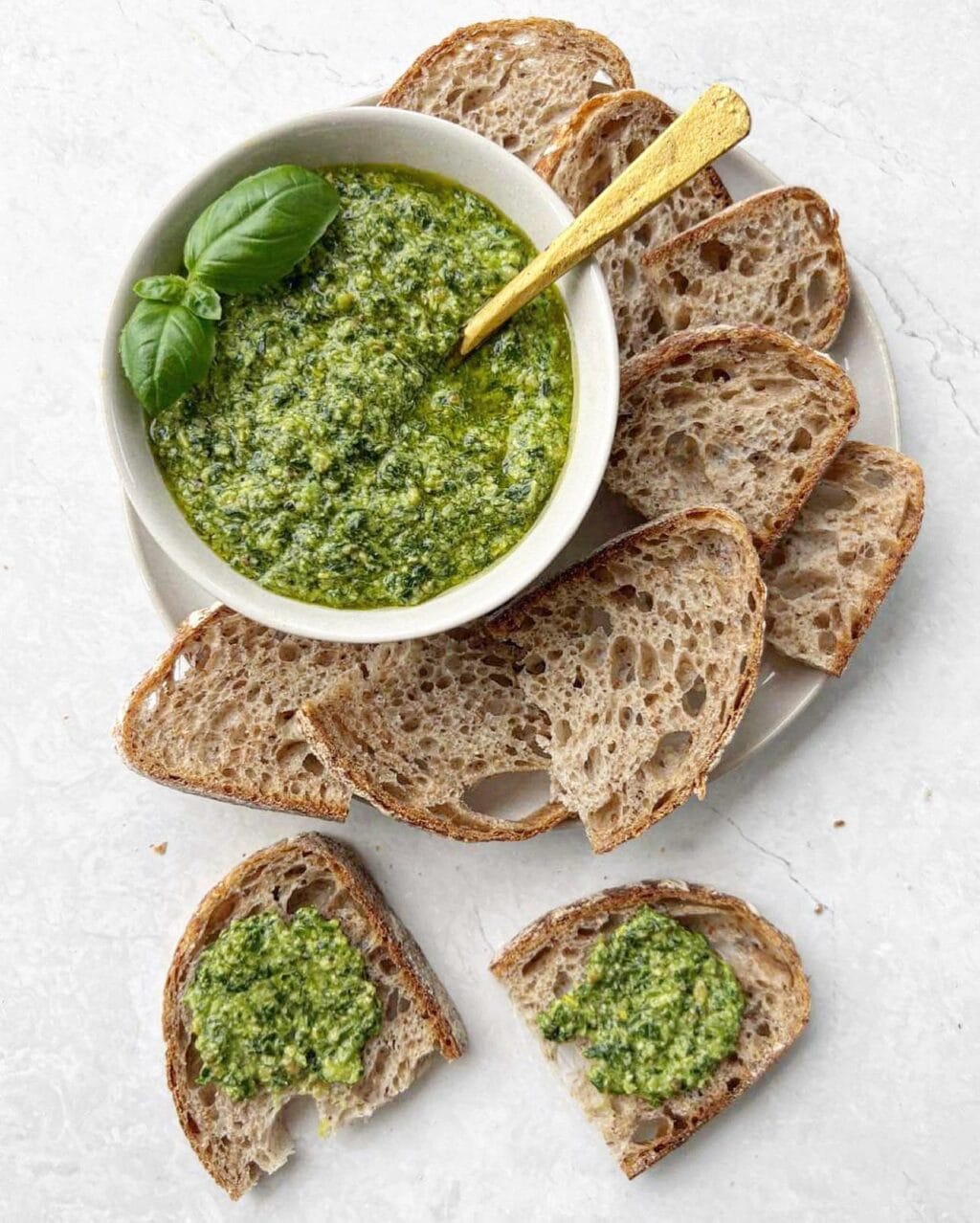
Every home cook should have a trusty pesto recipe in their repertoire. This Italian condiment is wildly versatile, infusing bursts of flavour into whatever it graces—pasta, vegetables, meat, sandwiches, salads, and beyond.
The most famous of pestos—Pesto alla Genovese—features a short list of ingredients: fresh basil, pinenuts, garlic, a hard cheese like Parmesan, olive oil and salt crushed or blended together into a vibrant sauce. While inspired on the classic (one wouldn’t dare butcher it), this recipe features lightly toasted pinenuts, and introduces lemon for bright, punchy flavour.
As a Registered Nutritionist, I love pesto for its nutrient-rich ingredients, but ultimately because it’s an epic way to add incredible flavour to meals. Pesto’s also super flexi to different dietary needs. Dairy-free? Skip the cheese. Nut-free? Swap for sunflower seeds. Hate basil? Try another herb. You do you.
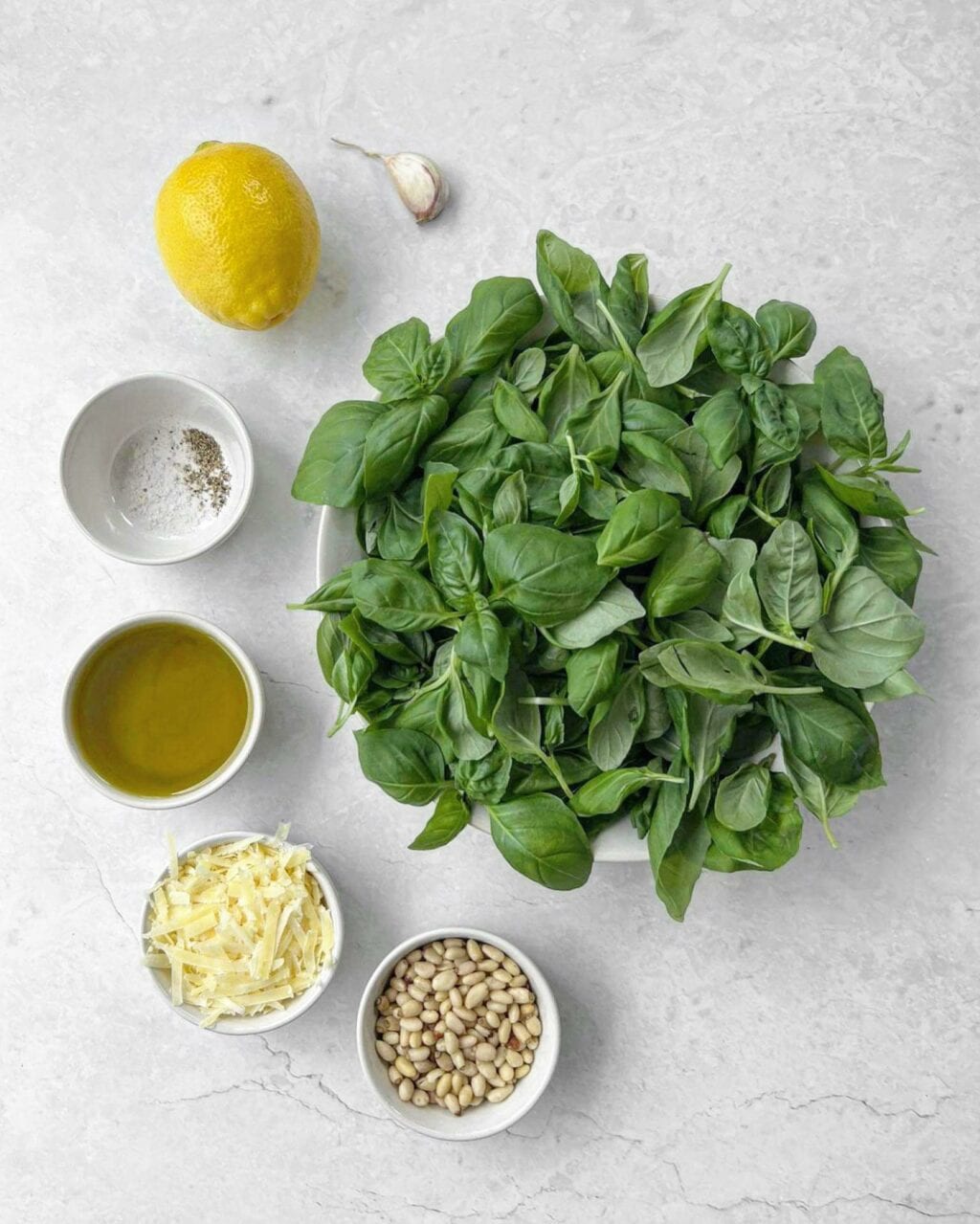
Gather Ingredients
- Basil. When choosing basil, opt for vibrant, green leaves without browning or limpness.
- Pinenuts. The classic nut choice for pesto, lending creaminess. Feel free experiment with alternatives, like walnuts or almonds.
- Parmesan cheese. If possible, grate fresh off a block yourself. Parmesan’s punchy essential oils and flavours are more pronounced when freshly grated.
- Garlic. This recipe includes a single fresh garlic clove to add depth of flavour, but not overpower the other ingredients.
- Lemon. We’re using zest and juice for a bright citrusy element, and to balance the richness of other ingredients.
- Extra virgin olive oil. You’ll need a light and delicate olive oil – look for bottles labeled ‘mild’. A strong or peppery olive oil can totally wreck the sauce.
- Salt. To make all the flavours ‘pop’. This recipe doesn’t provide an exact amount because it’ll depend on the salt used. Start with a pinch (the parmesan also adds saltiness), then adjust to taste. Bland pesto is bad pesto.
As pesto is made with just a handful of ingredients, the golden rule is to use the best quality ingredients you can find. Your tastebuds will thank you🙏.
Step-by-Step: Homemade Pesto
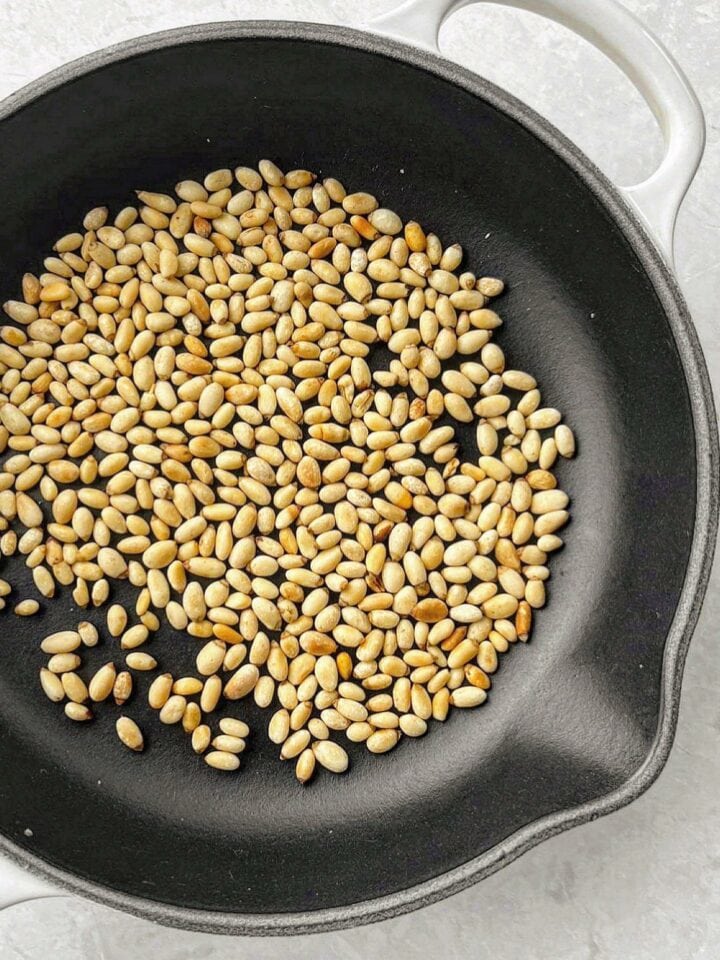
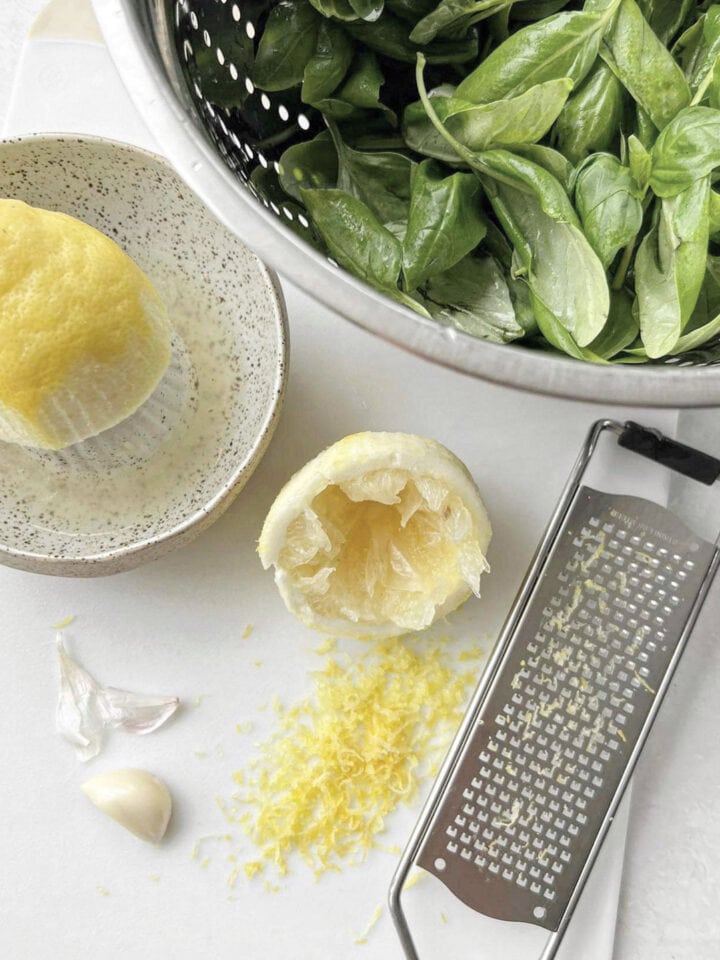
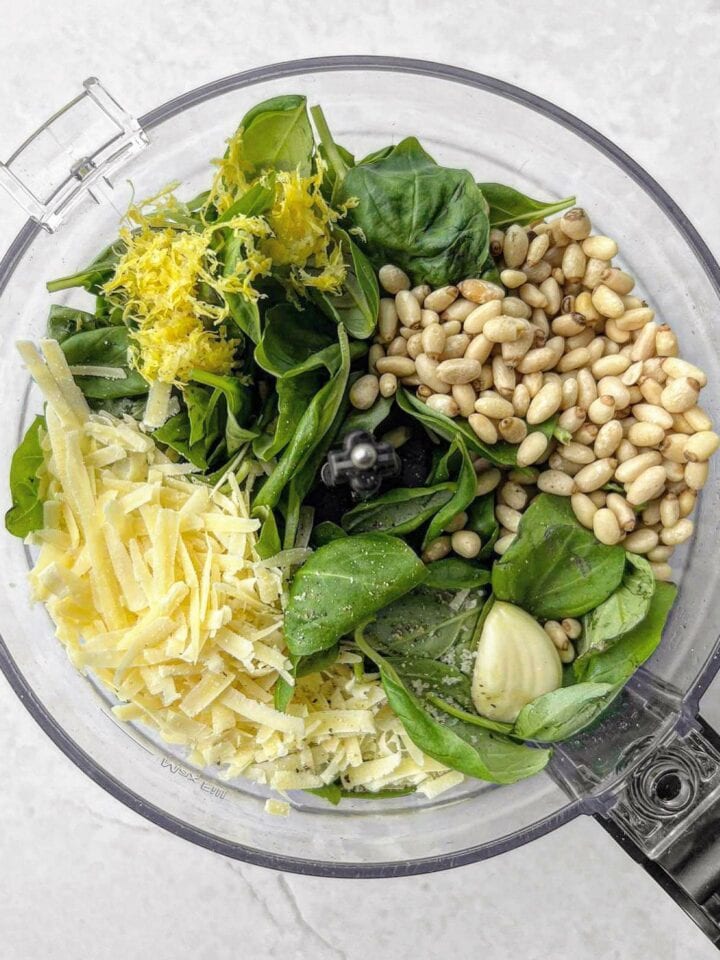
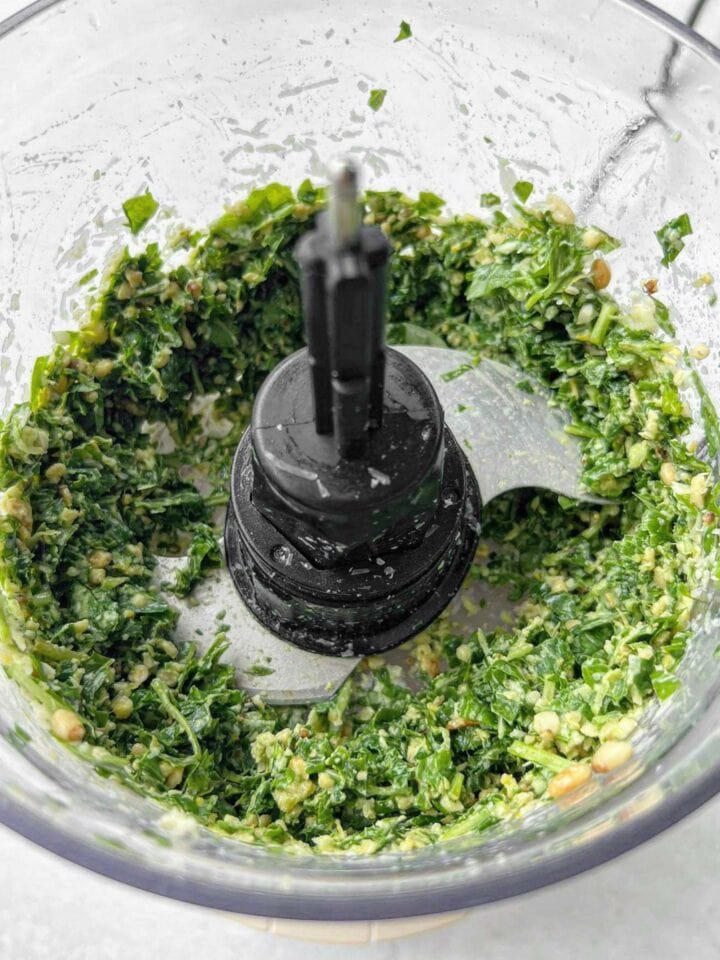
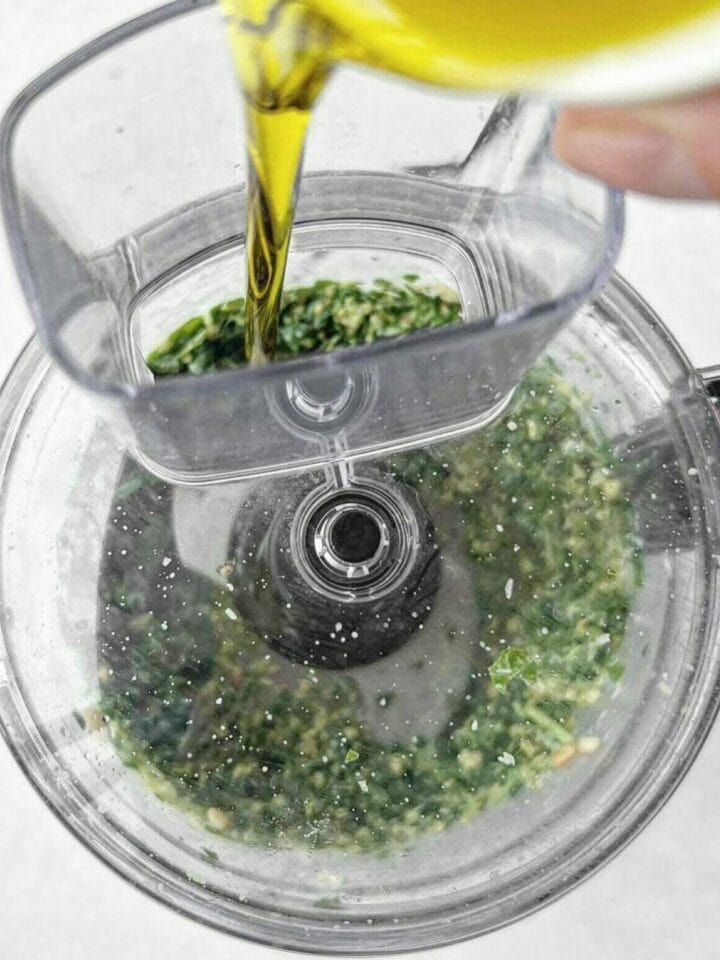
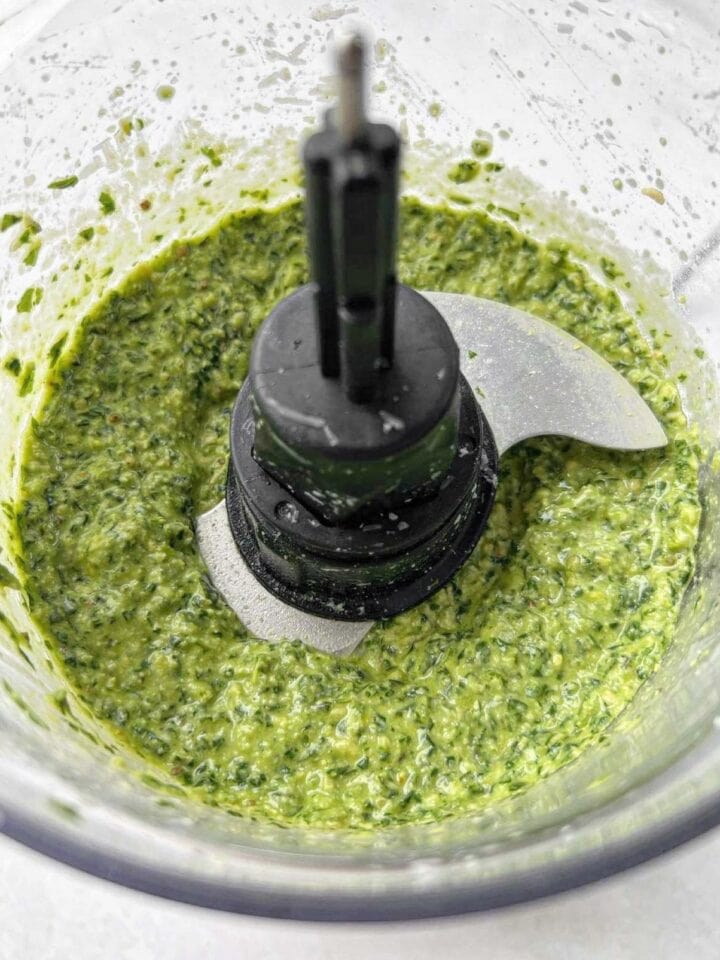
Can you use a blender to make pesto instead of a food processor? Absolutely. Just keep in mind that blenders require a certain amount of liquid to work properly, so you may need to add a touch more oil.
Kitchen Tips
- Pack basil into a measuring cup. There’s wild variance in weight between a loosely and tightly packed cup of leaves – so really compress it in, as we’re after a tightly packed cup. This is where a homegrown summer basil bush pays its weight in gold.
- Beware the pith. Lemon zest contains flavourful essential oils, while the white pith underneath is bitter – blegh. Use a fine grater to collect only the outer yellow peel.
- Lightly toast the nuts. More colour doesn’t equal better flavour. We want the pinenuts to still lend creaminess, and over-toasting can make them overly nutty or, worse, burnt. Shake the frypan regularly, and look for an aroma (nutty) and slight colour change (light golden hue) to signal they’re done.
- Pour in the oil slowly. This will help it evenly mix with ingredients that might otherwise separate, creating smoother, well-emulsified sauce. Opt for a lower-speed setting here, if you can.
- Tweak to perfection. Once you’ve added the oil, taste test and then adjust. Do you want more salt? Lemon juice? Another garlic clove? Make it yours!
Fun fact: the acidity in lemon juice helps slow down the browning process that happens to basil when blended. This will keep your pesto looking vibrant and fresh🍋.
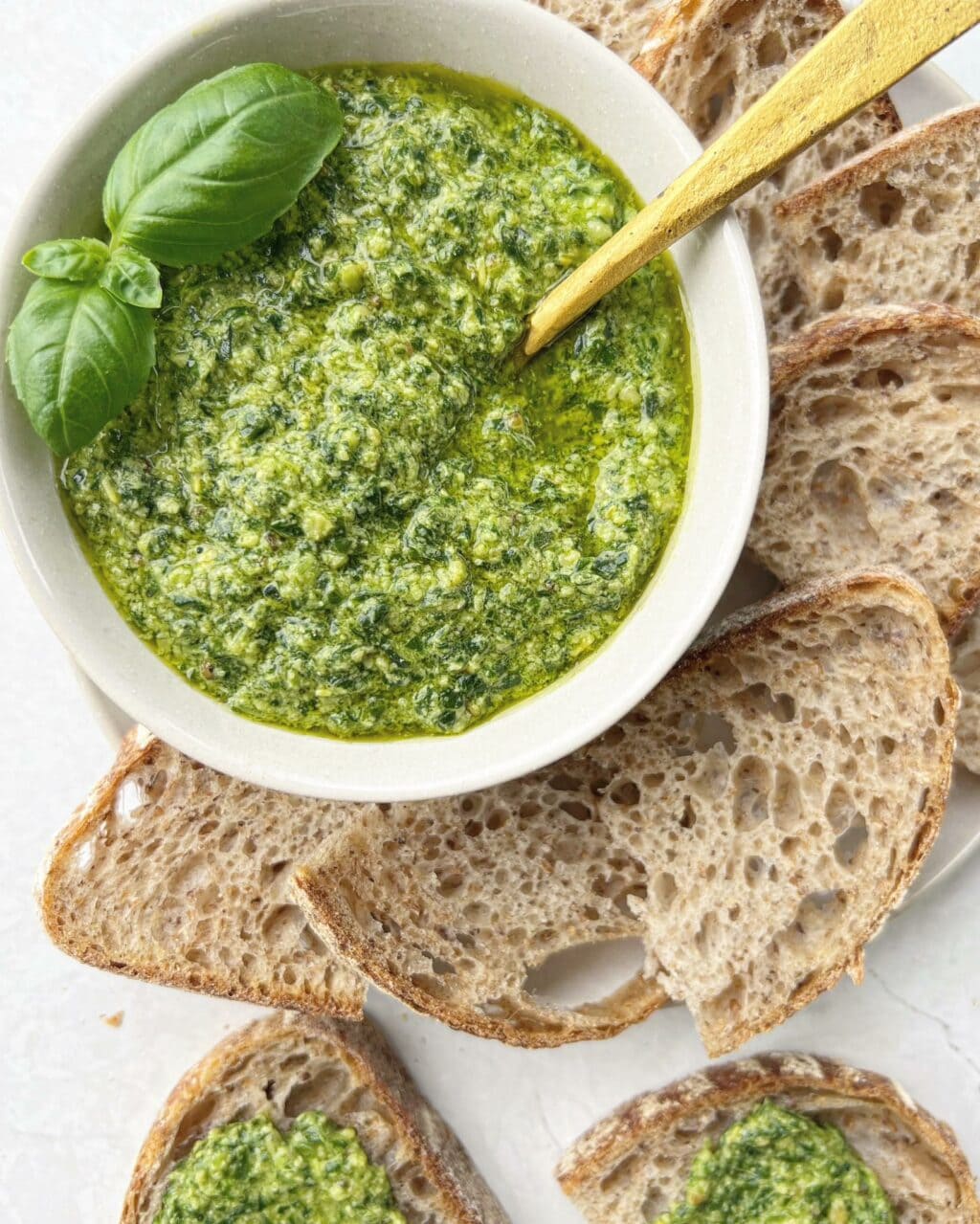
Serving & Storage
No matter the mealtime, pesto’s a trusty kitchen sidekick. Here are serving ideas:
- Pasta sauce. Toss with your favourite pasta. Great on its own, or as an ingredient to make a sauce, like in this creamy ricotta pesto pasta.
- Pizza sauce base. Skip tomato pizza sauce and use pesto instead; or drizzle overtop a freshly cooked pizza.
- Eggs on toast. Elevate brekkie with pesto. Try it spread on toast, like quick pesto scrambled eggs, or drizzled overtop eggs, like jammy pesto eggs.
- Coat roasted vegetables. Delicious with Mediterranean-style vegetables, like zucchini, eggplant, red onion and capsicum.
- Snack dip. Swap out hummus with pesto for a tasty vegetable snack dip.
- As a spread. Spread onto sandwiches or wraps for a herby kick; or try overtop rice cakes, like these tomato pesto rice cakes.
- In salads. Fabulous as an ingredient for a DIY salad dressing (whisk with EVOO and vinegar), or toss with baby potatoes for a vibrant summer side.
- Stirred into soups. Swirl into soups such as tomato, minestrone, or vegetable for extra flavour and richness.
- As a meat marinade. Brush onto chicken or fish before grilling or BBQing.
While emulsifying pesto helps create a smooth and cohesive texture, it’s not uncommon for the oil to separate over time, especially as it sits or is stored. If this happens, simply give the pesto a stir before using – good as new👌.
To store pesto, transfer into a mason jar or container. Cover with a thin layer of extra virgin olive oil (this creates a seal that prevents air from getting to it). Seal tightly and refrigerate for a few days.
Can’t eat your pesto in one go? Pesto freezes well. Try ice cube trays for storage; they’re more convenient to portion and defrost than a larger container. Once frozen, transfer the cubes to a freezer bag❄️.
Nutriton Q&A
What are the nutritional benefits of pesto? Despite that pesto is typically enjoyed in smaller amounts (i.e. as a condiment) it still offers nutritional benefits, such as:
- It’s antioxidant-rich. Pesto, especially when made with ingredients like basil and olive oil, is rich in antioxidants such as flavonoids and polyphenols. These antioxidants play a role in combating oxidative stress in the body.
- Heart-healthy fats galore. Thanks to its olive oil, pesto is a good source monounsaturated fats. These are types of fats that support heart health, improving the ‘good’ and decreasing the ‘bad’ cholesterol in our body.
- It can make other foods tastier to eat. Pesto’s flavourful nature can make other foods, like vegetables, meats or grains, more exciting to eat. This may make other nutrient-dense foods more enticing.
Thanks for reading! I hope you enjoy this recipe🌿.
Homemade Lemon Basil Pesto with Toasted Pine Nuts
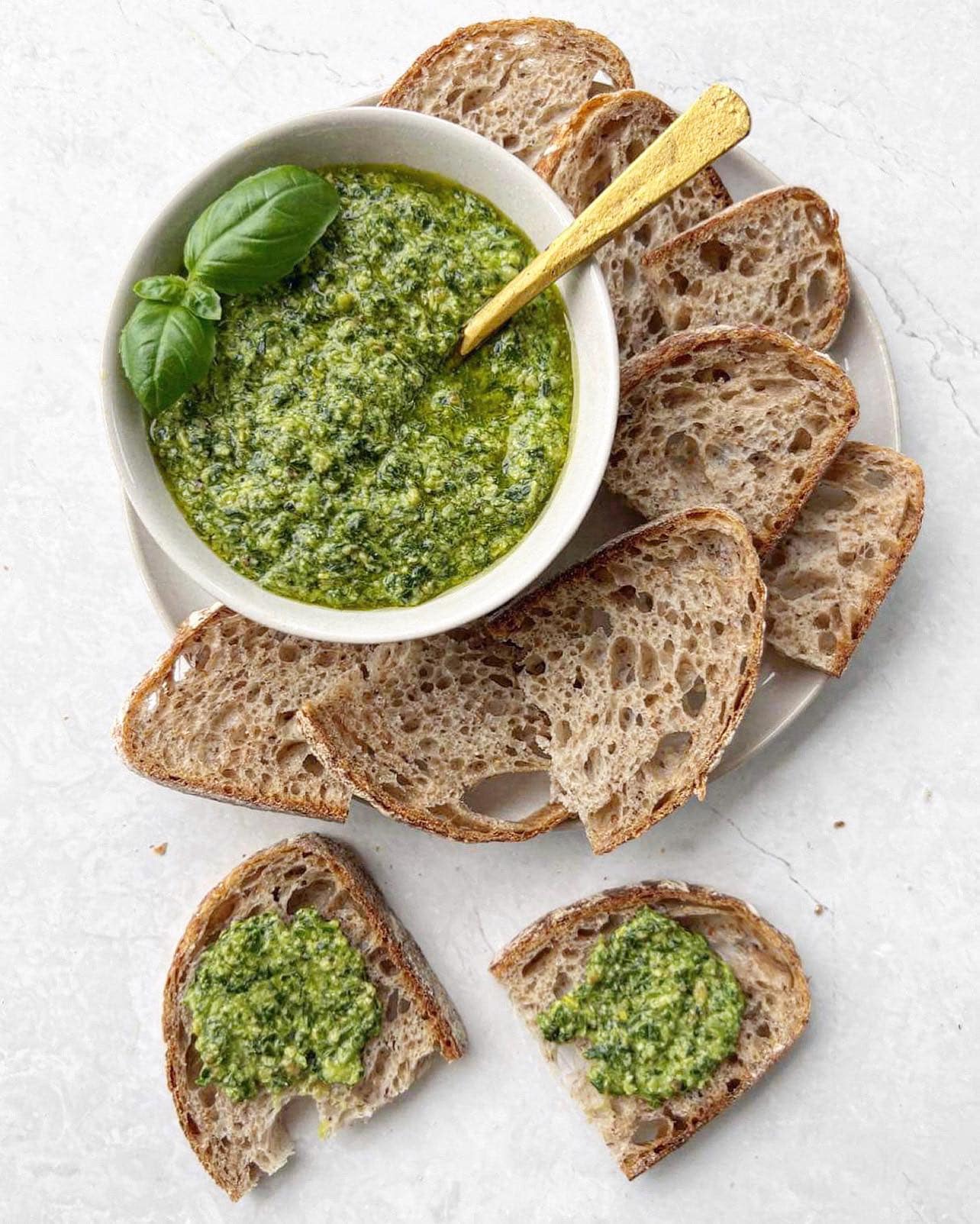
Ingredients:
- ¼ cup pinenuts
- 2 tightly packed cups of fresh basil leaves (no stems)
- ⅓ cup freshly grated parmesan cheese
- 1 garlic clove
- 1 lemon (1 – 1 ½ Tbsp juice and 1 tsp finely grated zest)
- Sea salt and freshly ground pepper, to taste
- ⅓ cup mild extra virgin olive oil, or more for a smoother consistency
Method:
- In a dry pan, lightly toast the pine nuts over a medium-low heat until aromatic and a you notice a slight colour change. Keep a watchful eye on the pan, so they don't burn or get too golden! Remove from heat and let cool.
- Prep the other ingredients while the pine nuts cool. Wash and thoroughly (but carefully) dry the basil leaves – make sure to remove as much excess moisture as possible (a salad spinner is good for this). The leaves cannot be wet. Zest and juice lemon. Peel garlic.
- Place the basil, nuts, cheese, garlic, lemon zest, juice (start with 1 Tbsp) and a pinch of salt and pepper into a small food processer or a blender.
- Pulse a few times until roughly chopped and combined. You may need to scrap the side down with a spatula a few times.
- With the food processor running, gradually pour in the olive oil through the hole in the lid. I find it easiest to put the oil measure into a milk jug with a spout and pour it in from there.
- Turn off the food processor. Taste test and adjust seasoning. Do you think it needs more salt or pepper? The remaining lemon juice? More garlic? Do you want it thin by adding more olive oil? Make it yours.
Notes:
- Salt will enhance all of the overall flavours, making them come more alive. If you feel the dish is lacking flavour, but doesn’t taste salty, then add a bit more salt. Do this slowly, a small pinch at a time.
- Lemon juice will add acidity and brightness. Add more lemon juice, if desired, to taste.
- Garlic adds pungency and aroma. Start with 1 clove, and if you want more, add another small clove or ¼ – ½ clove to start.


Leave a Comment & Rate this Recipe
If you enjoyed this dish, please consider giving it a star rating when you post a comment. Star ratings help others discover my recipes online (and your reviews make my day! 🙂 ). Happy cooking and baking. Danijela x
2 Comments
Absolutely delicious – what great flavour. Thanks for the recipe.
Pleasure! So glad to hear you enjoyed it. Thanks Tony 🙂